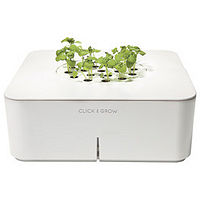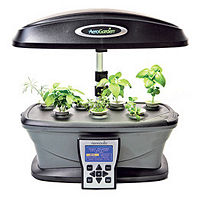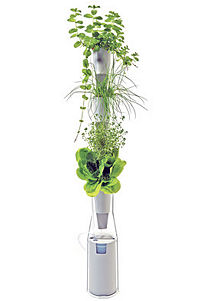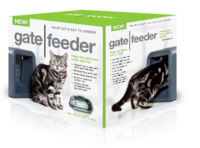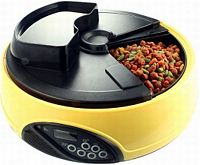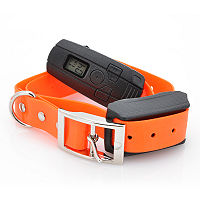Pet bowl and indoor garden opportunities
From DDL Wiki
(→Market Opportunities) |
(→Patent Searches) |
||
| Line 56: | Line 56: | ||
==Competitor Products== | ==Competitor Products== | ||
| - | |||
| - | |||
Revision as of 22:34, 23 February 2014
Contents |
Executive Summary
Market Research
Observation Studies
Indoor Garden
Pet Bowl
As our observation study, we watched an individual take care of three pets during meal time, and even tried the feeding process ourselves. We fed one large cat, one small cat, and one small dog. We found that the large cat finished first and immediately went over to the small cats bowl and started eating its food. We had to then manually move the big cat and then stand by the little cats bowl while it ate. The big cat then would go over to the dogs bowl and start eating its food until we moved the large cat away again. We ended up sitting around for 15 min while the animals finished their food. The experience was rather annoying and time consuming, and the large cat was never really deterred from eating from the other animals bowls. The pet owner faced the exact same challenges, and she hated the process, but didn't know of any other good solutions.
Other observations from the feeding process:
- The dog and the little cat did not put up a fight when the big cat came over to eat their food.
- The little cat did not eat all its food at once. It would walk away from the bowl for a few minutes, and then come back to finish.
- The dog and the little cat would sit next to their bowl while the big cat ate its food. They would wait patiently until the big cat left or was moved away and then would continue eating.
Expert Interviews
Indoor Garden
For our expert interview for the indoor gardening idea, we interviewed a staff member of Phipps conservatory, Mr. Dunigan. Phipps is a plant conservatory located in Pittsburgh. Most of the plants are located indoors, in a very controlled environment, and are maintained by a full staff. Generally the plants are grown in a greenhouse located behind the conservatory and then moved out to the main area once fully grown. Mr. Dunigan and the other staff members grow all kinds of plants, from all over the world, and thus know a lot about the difficulties associated with indoor gardening.
Here are the main conclusions we drew from the interview with Mr. Dunigan:
- The hardest part of growing plants indoors is maintaining the environment. Plants often require specific environmental conditions and, if these conditions aren't met, the plants will die. On top of this, different plants can require very different conditions, which
- Heat and light is generally provided by a heat lamp, and the intensity of the heat lamp is dependent on the needs of the specific plant.
- Plants are watered carefully, as to not drown the plant. The amount of water used is also dependent on the needs of the specific plant.
- One common problem people have with growing plants at home is maintaining a temperature. Oftentimes, especially in places that have central heating and air conditioning, plants experience a wide range of temperatures, which can make plant growth difficult.
- Plants are very expensive to maintain.
Mr. Dunigan was very helpful in learning about indoor gardening and the difficulties involved, though it should be noted most of the issues he dealt with involved growing large numbers of plants in a greenhouse. This information is still very relevant to our topic and helpful when making our design choices in regards to indoor gardening.
Pet Bowl
Surveys
Product Reviews
Indoor Garden
Through websites like Amazon, CNET, Mommy Poppins, and Pinterest we were able to learn about the main problems customers who want the ideal indoor garden face. A lot of people who have bought their own indoor gardens from competitors or have made theirs, wish their systems could work completely on their own. Customers want the system to be able to take care of all of the plant’s needs: water, light, nutrients, soil, temperature, and space.
A customer wants their experience cultivating plants to be simplified. Being able to replace plants is a challenge since plants must be re-potted and soil needs to be replaced. Some of the existing products do not handle this step and don’t notify the user when the plant must be re-potted.
Another feature customer look for, is a system that can be customized for each plant. If the water/light cycle could be set differently from each plant, that would be ideal. Customers would like pots to come in different sizes, be able to manage different types of water/light cycles, and also to be able to adjusts lights during the day and night. Current products don’t provide these settings to customers which are necessary if someone wants to produce more than one type of plant in their home.
Pet Bowl
The main concerns pet owners have with automatic feeders (i.e. The Gatefeeder) is that they don't want the pet bowl to harm their pets. Through online reviews, current pet bowl feeders with sensors have the tendency to close the lid/door on the pet. This causes injuries and can sometimes lead to the pet no longer wanting to eat from the bowl. Also, these sensors don't always work. When the sensor can't register the right pet it will open and close uncontrollably. Pet owners want to make sure the pet's food is secured, stored, and maintained by the system. If the lid is left opened for too long the food can go bad leading unwanted odor.
Market Opportunities
Top 3-5 Design Concepts
Competitor Products
Web Searches
| Indoor Garden Competitors | |||||||||
|---|---|---|---|---|---|---|---|---|---|
| Competitor Name | Image | Description | |||||||
| Click and Grow | [1] | The click and grow is a box that comes with plant cartridges that have the plant's seed and fertilizer in them already. All the user needs to do is to fill the bottom of the box with water. The system keeps track of moisturizing levels and applies the water during the day.The fertilizer decomposes gradually so the plant isn't receiving it all at once. Users need to place the device close to a window to receive sunlight. | |||||||
| AeroGarden Ultra | [2] | The system can be placed anywhere around the house. The device provides three full-spectrum fluorescent lights which can be controlled. There are "seed baskets" which have the soil, the seed, and a mix of nutrients that are gradually added during the plant's life cycle. More than one type of plant can be harvested. On-screen tips are given by to the user advising him/her when the plant will be ready. Nutrient packets must be replaced every two weeks. | |||||||
| Window Farms | [3] | Users must place the system next to a window so the plants can receive light. The device uses pumps to circulate water and nutrients to the plants which come in a column. So highest plant in the series receives the water first and it falls down to the other plants. This cycle happens for fifteen minutes every hour. The system is pretty simple to build but it cannot hold more than three types of plant. The system is easy to maintain and clean, but a lot of people have had problems with the pumps malfunctioning. | |||||||
| Pet Bowl Competitors | |||||||||
|---|---|---|---|---|---|---|---|---|---|
| Competitor Name | Image | Description | |||||||
| Gatefeeder | [4] | In an enclosed space it keeps the wet/dry food stored and ready for the pet. The door to the food opens only when the right cat comes close to the gatefeeder. The cat has a smart ID, that is mounted to the collar and allows access to the food. If the wrong cat comes near it will not be able to get in. The device keeps odors out and food fresh for a weekend. | |||||||
| WonderBowl | [5] | The pet bowl has a lid which opens and closes when the right pet comes near. The bowl works for cats and dogs. The device uses a tag to identify the right pet to give food to. The bowl must be filled with food by the user. It is not an automatic feeder as well. | |||||||
| Automatic Pet Feeder | [6] | The feeder displays five meals, enough for a week. It displays the right meal at the right time. The top lid moves to display the food and keeps rotating to deny access to it. However some are just timed to open, it is not based on a collar signal. | |||||||
| Vibrating Collar | [7] | Vibrating collars are used for training purposes. They are not programmed to work with a bowl/auntomatic feeder for the pet. They work by applying an electric shock or vibrations to the animal's neck to cause annoyance. | |||||||
Pugh Charts
Possible Market Segments
Gantt Chart
Team Member Roles
Melanie Jasper:
Derek Lessard:
Daniel Mark:
Gloriana Redondo:
Daniel Tabrizi:
Findings and Recommendations
References
Appendix A: 100 Brainstorming Ideas
1. Automatic feeder w/ chain assembly.
2. Three layer pet bowl.
3. Interactive layer pet bowl.
4. Wet/Dry Food automatic feeder with compartments.
5. Bowls with lids over each: open and close when cat gets near.
6. Rotating bowl: displays food in small quantities.
7. A pet bowl dispenser: dispensing food so long as pet keeps eating.
8. One size bowl.
9. A pet bowl that pushes bad cat's face out to minimize risk of trapping it.
10. Bowl which dispenses piece by piece. Food gets scooped back to top if not eaten.
11. Pet bowl with segmented doors.
12. Pet bowl that sprays water/air to annoy bad cat.
13. Bowl that moves food away from bad cat.
14. Multiple bowls.
15. Rotating plant.
16. Series of plants in a conveyor belt.
17. Indoor greenhouse.
18. Dangling plants: receive artificial lighting and water from sprinklers.
19. Modular stack-able design.
20. Plants hang from windowsill bars: plugged in to receive water/light.
21. Tree design.
22. Egg shaped pot.
23. Plant pot with heated pad: induction coils or peltier cells.
24. Plug in pots with battery packs.
25. Pots with water screen to limit water flow.
26. Pots with sensors notifying user when to replace soil/water.
27. Rotating Shelves.
28. Hinged pot.
29. Plastic sieve.
30. Chicken wire sieve to re-pot.
31. Full capsule pot w/ full environmental controls
32. Changing size wire top w/ water and light
33. Puzzle piece pod design
34. Self Sustaining Pod design
35. Screw on enviro lid
36. Elevator bowl w/ small hole opening
37. All in one, multi-pet feeder
38. Vibrating collar
39. Electromagnet flap housing
40. Magnetized bowl and collar
